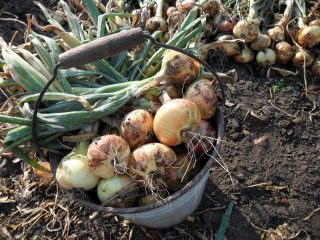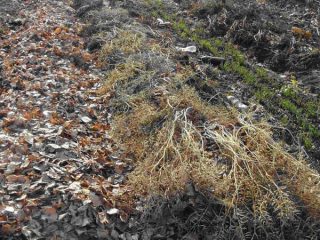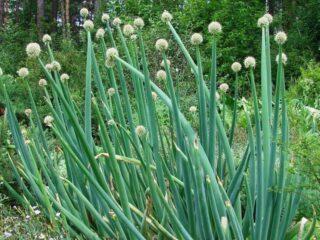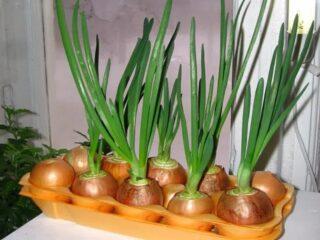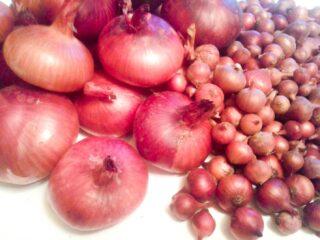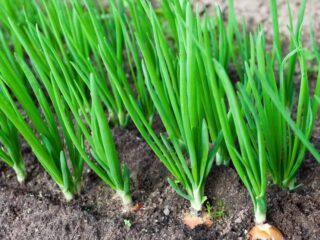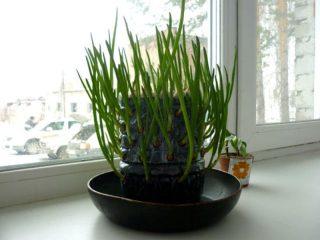Content
If the onion turns yellow, you can water it with fertilizer solutions and fungicidal agents. But before that, you need to understand what exactly the vegetable crop suffers from.
Why does the onion in the garden turn yellow?
If the onion greens begin to turn yellow, this could be due to several reasons. The problem often appears due to violations in agricultural technology.
Improper watering
When grown, onions require regular watering - they are necessary for the development of green mass and the formation of turnips. However, overwatering causes severe harm to the crop. The plant should be watered mainly in the first stages of the growing season. Closer to July, the intensity of moisture is reduced, and three weeks before harvest, they completely stop adding moisture.
If onions grow in waterlogged soil, their feathers begin to turn yellow. If a problem occurs, you must immediately stop watering and allow the soil to dry thoroughly.

When growing onions on clay soil, you need to add sand to the ground before planting to improve drainage.
Lack of nutrition
Onions begin to turn yellow when grown in too poor soil. Most often, feathers change color due to a deficiency of nitrogen, which is responsible for the formation of green mass. You can understand that there is a lack of useful substances in the soil by other signs - paleness and softening of leaves, slowdown in crop growth.
If the feathers begin to turn yellow, you need to water the beds with a solution of bird droppings or mullein. You can also use complex minerals in low concentrations.
Particular attention should be paid to fertilizing when growing crops on heavy, wet soils with an acidity of 7.5-8 units. Such soil absorbs nutrients less well; even with regular fertilization, problems may arise.
Low temperatures
If onion feathers turn yellow at the beginning of summer, the reason may be a sharp cold snap. In June, frosts still occur at night, especially in the Urals and Siberia. The above-ground parts and root system of the vegetable crop are damaged, and the plant’s nutritional processes are disrupted.
Onions often begin to turn yellow due to premature planting. If you sow seeds in open ground ahead of schedule, without waiting for the soil to warm up properly, the material may sprout, but it will develop worse.
Pest attack
Onion feathers turn yellow and dry out due to the negative effects of pests. Several parasites pose a particular danger to the plant.
Onion fly
The insect attacks vegetable plantings mainly in late April and May.The larvae of the parasite feed on the developing bulbs, and the tips of the feathers begin to turn yellow and wither.
Controlling the pest is quite difficult. When an onion fly appears, damaged plants should simply be dug out of the ground and destroyed. The remaining plantings are treated with insecticides.
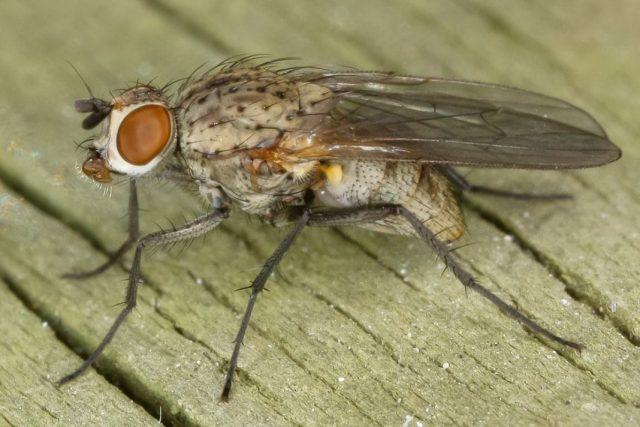
Regular pollination of the beds with tobacco dust helps prevent the appearance of onion flies in the garden.
Secretive Proboscis
Onions turn yellow if they are eaten by the onion secretive proboscis, or weevil. The pest larvae are whitish caterpillars up to 7 mm in length. Parasites feed on the greenery of the plant, as a result the feathers begin to turn yellow, holes and narrow passages appear in them.
If a secretive proboscis is detected, the beds must be treated with a solution of wood ash or Karbofos. It is also recommended to spray with home remedies as a preventive measure to prevent the appearance of the pest.

It is difficult to notice an adult onion secretive proboscis in the beds, since during the day it mainly hides in the soil
Onion nematode
Green onions turn yellow due to the presence of stem nematodes in the garden. The feathers of the plant not only change color, but also wrinkle. If you open the affected leaf, you will see thin white worms inside it.
Bulbs affected by nematodes must be urgently dug up and burned. Pest control focuses on prevention. Even before planting, the seeds and soil are treated with a solution of potassium permanganate to destroy the eggs of the parasite.

The nematode often appears on onions when the crop is adjacent to potatoes and tomatoes
Onion thrips
A dangerous pest of onions is thrips, a microscopic insect up to 1 mm in length.It is almost impossible to examine the parasite on the plant, but its presence is indicated by whitish spots on the leaves, which gradually merge with each other. The feathers of the vegetable crop also begin to turn yellow, then dry out and wither.
Plants damaged by insects must be destroyed; they cannot be cured. Healthy specimens are sprayed with insecticidal preparations - Iskra, Actellik or Confidor.
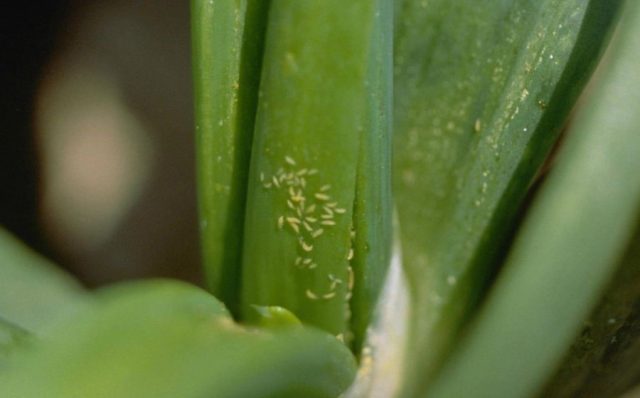
Onion thrips in the middle zone is found in open ground, and in Siberia and the Urals it usually appears in greenhouses
Onion moth
If the tips of the onions turn yellow at the end of spring or at the beginning of June, it is possible that the vegetable crop has been attacked by a moth. The adult insect is a brown butterfly, and the larvae of the parasite look like yellowish small caterpillars. They are the ones who eat the greenery of the plant, and sometimes penetrate into the underground bulb.
The drugs Iskra and Metaphos help get rid of moths. In addition, for prevention, it is recommended to plant seedlings in the beds early - in this case, the harvest can be harvested before the pest becomes active.

Onion moths overwinter in plant debris, so in the fall the beds must be thoroughly cleaned of debris.
Diseases
If the onion greens begin to turn yellow, this may indicate the development of fungal diseases. Most often, damage to vegetable plantings is caused by several infections.
Rust
The fungal disease affects onions most often in May and June in cool weather with high humidity.It is easy to recognize the disease - the feathers of the plant not only turn yellow, but orange growth spots appear on them, slightly protruding above the surface of the leaves. Over time, the onion begins to wither and turn black, the green mass fades and falls off.
At the first signs of rust, the plantings need to be sprayed with preparations containing copper. Warming up the seed and soaking it in a solution of potassium permanganate can prevent the onset of the disease.
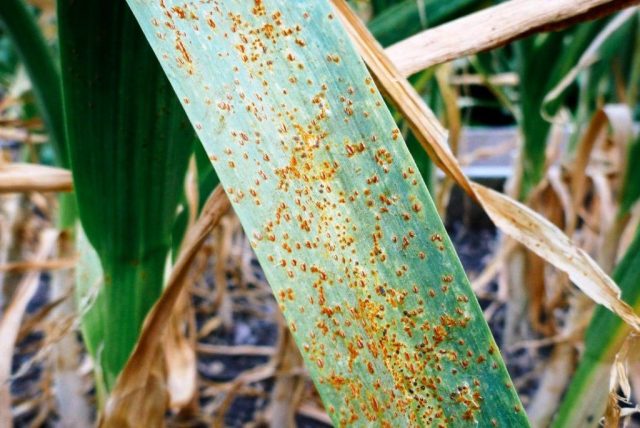
The appearance of rust on onions is caused by excess nitrogen in the soil.
Bacterial rot
Bacterial rot, which causes onion feathers to turn yellow, usually develops against the background of pest activity. The disease is caused by onion fly, thrips and weevil. The leaves of the plant become lethargic and change color, the flower stalks dry out, and the underground part begins to rot.
In the fight against a disease, it is necessary to first eliminate its cause. Onion plantings are treated with insecticidal agents to get rid of insects. Affected plants cannot be saved; they should simply be removed from the garden. After eliminating the pests, it is recommended to spray the remaining onions with copper sulfate or a solution of wood ash to strengthen its immunity.
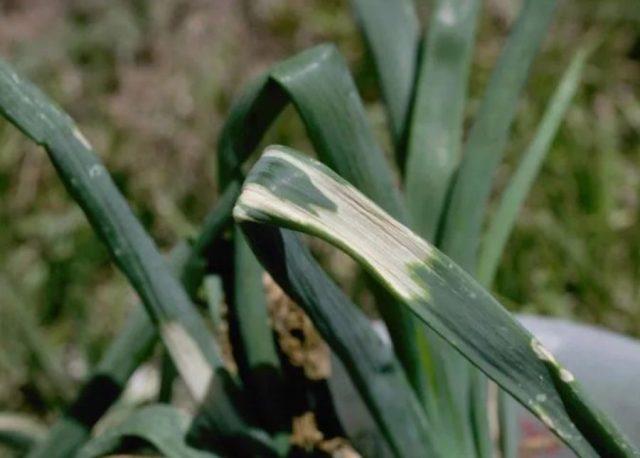
With bacterial rot, onions can emit a strong, unpleasant odor.
Bottom Rot
Bottom rot develops due to fusarium, a fungal disease that affects plantings in waterlogged soil. The onion begins to turn yellow and slows down its development, and then dies.
In the early stages, you can fight the disease with the help of copper preparations - Fundazol, vitriol, HOM. To ensure the prevention of the disease, you need to carefully choose the place for planting the crop. The soil should not be too wet or acidic.You cannot plant the plant after grain crops - in this case, the likelihood of developing bottom rot will increase.
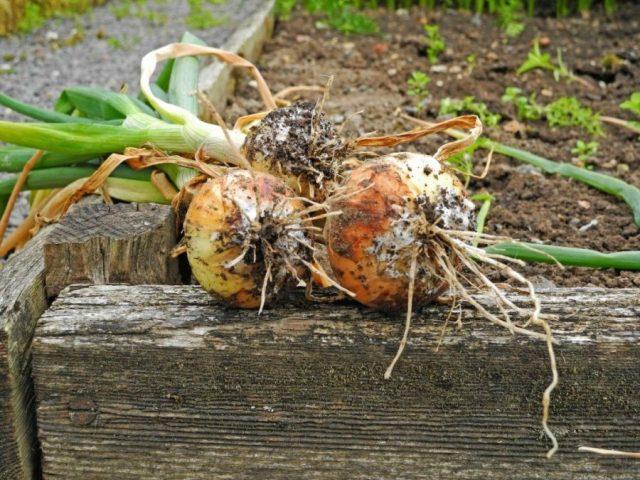
Bottom rot of onions most often appears in mid-summer.
What to do if the onions turn yellow in the garden
If the onions in the garden begin to turn yellow, it is better to start processing them as early as possible. It is allowed to use both folk remedies and chemicals to treat plantings.
Saline solution
An ordinary saline solution helps well against fungi and pests, which also improves the composition of the soil. It is prepared like this:
- Stir 200 g of food powder in a bucket of water.
- Add about 10 ml of ammonia.
- Add 15 g of wood ash.
- Stir the resulting product thoroughly.
The solution is used to water the beds; the soil is thoroughly loosened after the procedure. You can use the product every two weeks, but no more than three times during the summer.
Herbal infusion
An infusion of herbs with a pungent aroma helps to feed onions and repel pests from them. Here's a home remedy:
- Fill an enamel bucket halfway with dandelions, wormwood and calendula in equal quantities.
- Fill the herbs with warm water to the top.
- For two days, infuse the product in a dark place under a lid.
- Strain the drug and dilute it with clean water in a ratio of 1:10.
- Add 50 g of soap shavings.
The resulting preparation is sprayed on onion beds, trying to irrigate mainly the soil at the roots, and not the leaves. The product is used up to five times during the season.
Fitosporin-M
Fitosporin-M solution has good fungicidal properties. They do it according to this scheme:
- Stir 10 g of dry powder in 500 ml of water.
- Bring the solution until homogeneous.
- Add to the bucket's volume.
The product is used for spraying beds on a warm but cloudy day.The drug helps to cope with fungi in the early stages, and also preventively protects onions from illnesses.
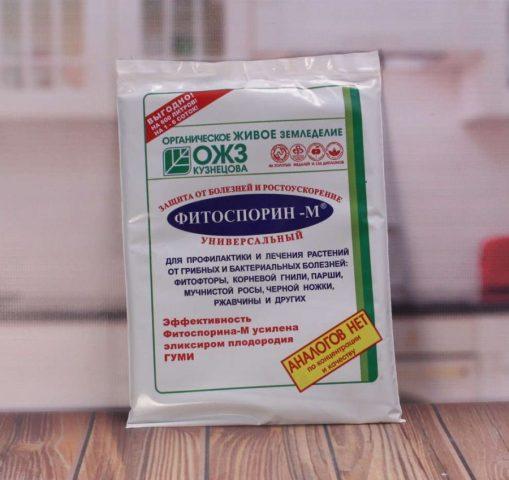
Treatment with Fitosporin-M can be carried out once every two weeks.
How to water onions so they don't turn yellow
Most often, onions turn yellow in the greenhouse and in the ground due to a lack of nutrients in the soil. It is recommended to pay attention, first of all, to the prevention of nitrogen deficiency. You can feed the vegetable crop with a solution of urea or ammonia, both products give a good effect.
How to water onions with urea
A solution of carbamide, or urea, replenishes the lack of nitrogen in the soil and prevents yellowing of onion feathers. The product is prepared according to the following scheme:
- Make a solution of mullein or chicken droppings.
- Pour about 250 ml of organic fertilizer into the bucket.
- Add 15 g of dry urea in granules.
- Fill the components with 10 liters of clean water.
- Stir the solution properly.
The resulting product is used to water the onion beds in the evening in dry, warm weather. It is recommended to treat the plant with a solution containing urea in spring or early summer, while the crop is at the stage of active development.
How to treat onions with ammonia
To water yellow onions, you can use a 10% ammonia solution or ammonia. The fertilizer is well absorbed by the vegetable crop and prevents feathers from discoloring even on very poor soil.
You can prepare fertilizer using the following algorithm:
- About 60 ml of ammonia solution is poured into the bucket.
- Dilute the product with 10 liters of clean water.
- Mix the product.
The drug is used for watering beds. The soil must first be moistened with plain water so that burns do not appear on the onion roots.
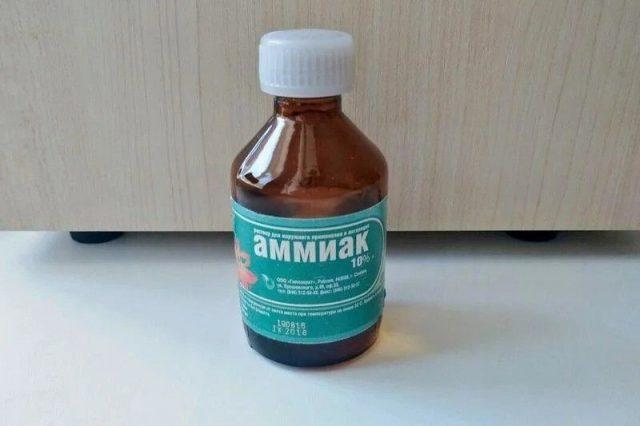
Ammonia not only improves the composition of the soil, but also repels pests with its pungent odor.
You can treat onions that turn yellow with a variety of preparations. But it is best to prevent the problem from arising in the first place. When growing crops, it is recommended:
- plant onions in a new area every year;
- regularly weed and loosen the beds with the plant;
- water the onions as needed, but avoid over-watering;
- Apply organic and mineral fertilizers on time.
You also need to pay attention to pre-sowing preparation. Before planting, onions must be treated against fungi and pests with special means, and also heated at a temperature of 45-50 °C.
Conclusion
If the onion turns yellow, you can water it with nutrient solutions or antifungal and pest repellents. Treatments must be carried out at the first signs of crop wilting.

